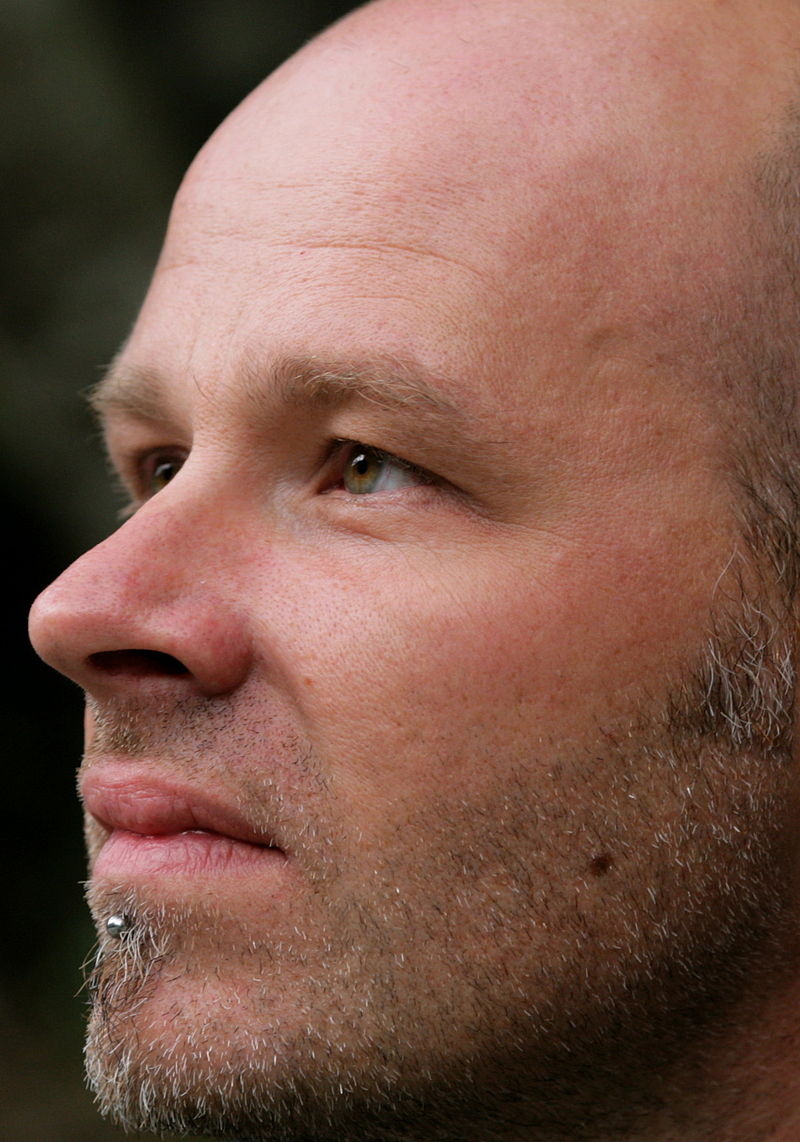Title of the work
Country of the First Edition
Country/countries of popularity
Original Language
First Edition Date
First Edition Details
Kai Meyer, Arkadien brennt. Hamburg: Carlsen 2010, 405 pp.
ISBN
Genre
Action and adventure fiction
Fantasy fiction
Target Audience
Young adults
Cover

We are still trying to obtain permission for posting the original cover.
Author of the Entry:
Michael Stierstorfer, University of Regensburg, michael.stierstorfer@ur.de
Peer-reviewer of the Entry:
Markus Janka, University of Munich, janka@lmu.de
Elżbieta Olechowska, University of Warsaw, elzbieta.olechowska@gmail.com

Portrait uploaded by Sinharat69. Retrieved from Wikipedia, licensed under CC BY-SA 3.0 (accessed: January 3, 2021).
Kai Meyer
, b. 1969
(Author)
Kai Meyer was born in 1969 and lives in Germany. After studying film and theatre at the University of Bochum, he worked as a journalist before devoting himself to writing novels full time. He has since published over fifty titles, including numerous bestsellers, and is recognised as one of Germany’s most remarkable writers of fantasy. He focuses on fantasy topics like goddesses, angels, werewolves, Vampires and fairies. There are over 1.5 million copies of Kai Meyer books in print in his country alone. His works have been adapted as films, comics and radio plays, and have been translated into 30 languages.
Sources:
Official website (accessed: August 12, 2019)
Profile at amazon.de (accessed: August 12, 2019)
Bio prepared by Michael Stierstorfer, University of Regensburg, Michael.stierstorfer@ur.de
Translation
English: Arcadia Burns, trans. Anthea Bell, Harper Collins/Balzer + Bray, 2013.
Sequels, Prequels and Spin-offs
Prequels:
Kai Meyer, Arkadien erwarts [Arcadia Awakens] (2009).
Sequels:
Kai Meyer, Arkadien fällt [Arcadia Falls] (2011).
Summary
When Rosa Alcantara and Alessandro Carnevare try to be intimate, they are transformed into mythical beasts, the moment they get too close to each other. The reason for this lies in the fact that they belong to different mafia clans, which have been adversaries for centuries. Therefore, their fate seems to be an eternal fight against each other. When they realize the problem, they stop trying to be intimate, Rosa moves to New York and after many years reconciles with her mother Gemma. Her mum escaped from Sicilia a long time ago fearing the mafia. Consequently, Rosa and Alessandro search for an ancient peace bringing statue, which would be able to unite the hostile clans of the Carnevares and Alcantaras; unfortunately, it seems that the statue sunk to the bottom of the sea. During this adventure, the fight against Lycaon, the dangerous werewolf of Arcadia, is renewed. He sends big dogs called "Hundingas" to attack Rosa and Alessandro. But the two teens manage to defeat Lycaon’s henchmen. In the end Rosa is informed that she descends from the two mythical snakes, which fought against each other in Arcadia until the Olympian god Hermes saw them, brought peace to them and put them onto his caduceus, a wooden stick made of the olive-tree, as a symbol of peace.
Analysis
Also in this second volume of the trilogy, the fables of Aesop, the Lycaon myth and the myth of Hermes bringing peace to Arcadia from the first book of Ovid’s Metamorphoses serve to evoke a story with fantasy elements. The mythical animals: Lamias, panthers and werewolves function in a mafia-like context. The motif of the freedom bringing statue obviously refers to the statue of Athena Parthenope, which was made of ivory and gold. In this volume, the search for statue is the reason, why the teenagers Alessandro and Rosa travel through Italy. The ancient Greeks believed that this statue, at the Parthenon temple on the Acropolis of Athens, has the power to bring peace and freedom to humanity. The transformation of Rosa into a snake represents a super-human power inherited and wielded by the (demi)goddess: Rosa’s ancestors where part of Hermes’ famous caduceus. The love story of Alessandro and Rosa resembles that of Pyramus and Thisbe (in the fourth book of Ovid’s Metamorphoses), or of Romeo and Juliet in Shakespeare’s play. The story becomes more exciting, when the author reveals, how difficult it will be to find the statue. The hostility of their clans almost forces them to give up their love. The conflict drives the plot, preventing them to consummate their love. The narrative reveals a conservative perspective on a young couple who try to enjoy free sexuality. According to the ideology of that novel, such unsanctioned intimacy should be prevented. The motif of abstinence from physical love is not new; it is present in the international romantasy-bestseller Twilight (Meyer, 2005–2008) and also to the fantasy bestseller Starcrossed (Angelini, 2011–2013). The ideology in Arcadia Burns is based on the antiquated principle that men must always use violence to solve their problems. The “Hundingas”, who follow and threaten Rosa and Alessandro are reminiscent of Cerberus, the huge watchdog, who guards the underworld and seeks for souls, who try to escape from this sad place.
Further Reading
Anselm, Sabine, “Zeitgemäße Helden!? Überlegungen zur Rezeption von (antiken) Heldenbildern in einem (post)modernen Literaturunterricht” in Markus Janka and Michael Stierstorfer, eds., Verjüngte Antike. Griechisch-römische Mythologie und Historie in zeitgenössischen Kinder- und Jugendmedien, (Studies on European children’s literature (SEKL), vol. 5, ed. by Bettina Kümmerling-Meibauer, Anja Müller and Astrid Surmatz), Heidelberg: Winter, 2017, 117–134.
Stierstorfer, Michael, Antike Mythologie in der Kinder- und Jugendliteratur der Gegenwart. Unsterbliche Götter- und Heldengeschichten? [Ancient Mythology in Current Children’s Literature. Immortal Stories of Gods and Heroes?], Frankfurt am Main: Peter Lang, 2017, 180 pp.


